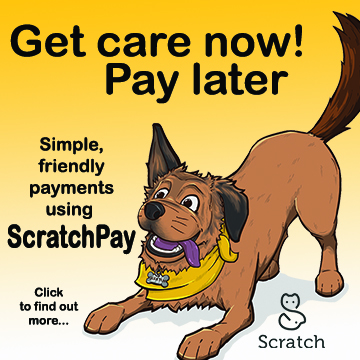OUR HOURS
Mon — Fri 7:30 am — 6 pm
HOLIDAY HOURS:
DECEMBER 24-25 CLOSED
JANUARY 1 CLOSED
we are happy to accept:
cash * visa * mastercard* discover* american express
*Not all Care Credit promotions are available.
Our Downtown Clinic
Convenient location, ample parking, and the same great doctors. Please come visit us!
Hospice Care & Euthanasia
There may come a time in your pet’s life when treatment of a disease or condition is no longer an option. This could be for a financial reason or because there are no treatments that would benefit your pet. In the advanced stages of diseases such as cancer, kidney failure, or neurological disorders, sometimes treatments cause pets pain or make them ill, without any hope of curing their disease. At this point, you may want to speak to your veterinarian about the quality of your pet’s life and if aggressive treatments should be discontinued.
a financial reason or because there are no treatments that would benefit your pet. In the advanced stages of diseases such as cancer, kidney failure, or neurological disorders, sometimes treatments cause pets pain or make them ill, without any hope of curing their disease. At this point, you may want to speak to your veterinarian about the quality of your pet’s life and if aggressive treatments should be discontinued.
Essentially, hospice means providing palliative care (comfort-oriented rather than cure-oriented) until the animal dies or until the caregiver makes the decision to euthanize.
Pet hospice is a relatively new concept, and is modeled on the human hospice movement. A ”hospice” is not necessarily a particular place; it is a philosophy of care that is founded upon the principle that end-of-life care should and can be provided by the pet’s family, in a safe, caring, comfortable and familiar environment. Hospice is not an effort to cure the pet’s disease but to prevent the disease from causing pain and discomfort and to give the pet physical and emotional comfort during this intermediate stage between treatment and death.
A treatment plan will be developed between you and your veterinarian for your pet. The plan will provide detailed instructions on giving your pet’s day-to-day care. This may include administering oral and injectable medications, if you are comfortable doing so. The doctor will inform you of signs that may indicate that your pet’s disease is progressing. These changes may include the amount of vocalization from your pet, amount of food and water consumed and neurological signs. Any time symptoms are changing, contact the doctor to discuss what you have observed.
Providing hospice care to your pet will give you time to come to terms with your pet’s progressive disease and allow you to say good-bye in your own way.
Before it comes to the time when euthanasia is appropriate for your pet, you should discuss the procedure and options with your veterinarian.
Though a sad part of our practice, there comes a time when your pet’s suffering and pain may make their life unbearable. We will be there to help you and your pet through this difficult time.
resources for pet owners:
Tools for Assessing Quality of Life
The Euthanasia Appointment - What to Expect
Dr. Mary Gardner's shop for aging pet products
Pet Loss and Grieving Support Resources
- UC Davis Pet Loss: www.vetmed.ucdavis.edu/ccab/petloss.html
- Tufts University Pet Loss Support Hotline: www.tufts.edu/vet/petloss
- Minnesota Pet Loss Resources: www.pet-loaa.net/resourses/MN.shtml


